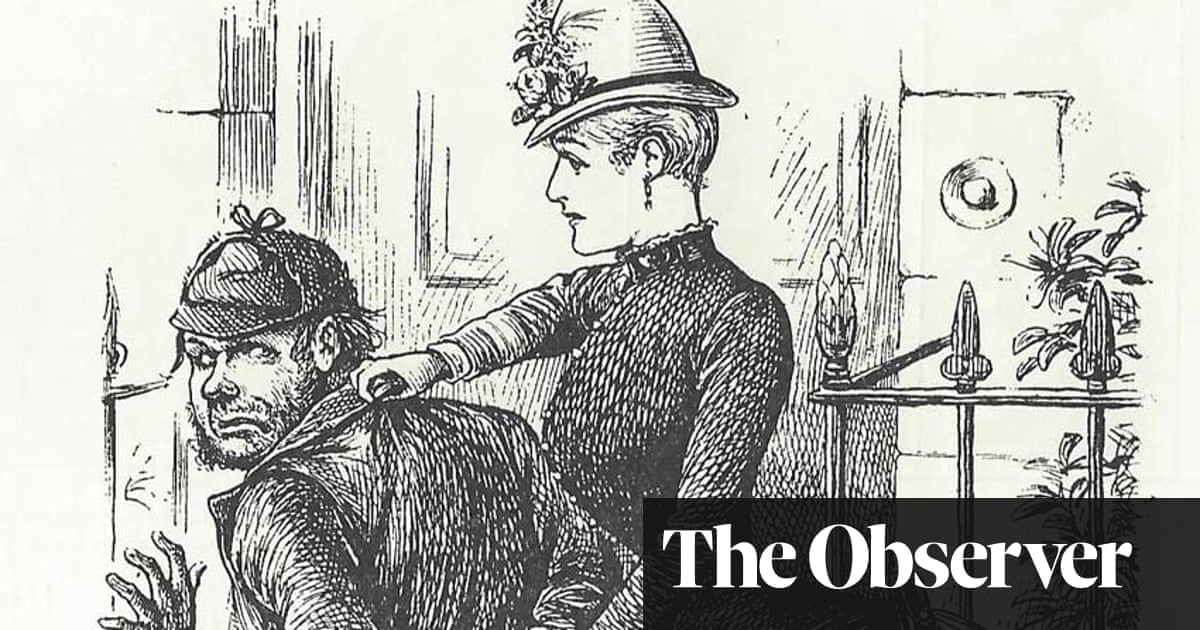Some of the “searchers” were skilled at inspecting the clothes, hair and genitals of Victorian women and finding stolen money and pawn tickets for stolen goods. Others undertook risky sting operations, catching thieves and criminals red-handed and successfully testifying against them in court. Yet for nearly 200 years, the vital role 19th-century female detectives played in the police force has been overlooked and underestimated.
Now a new book is seeking to assert the rightful place of these courageous women – who were often working class – in the history of the police and celebrate their proto-feminist contribution to Victorian society.
“Women don’t officially enter the police force as officers until 1917. But across Britain, in a commonplace way, women are working for the police long before the police tell us they are,” said Dr Sara Lodge, a senior lecturer in Victorian literature and culture at the University of St Andrews, Scotland, and author of the forthcoming boo, The Mysterious Case of the Victorian Female Detective. “They are part of the fabric of Victorian policing.”
Lodge has found records of “searchers” – women employed to search female suspects for concealed stolen goods at police stations – which date back to the 1840s, shortly after the Metropolitan police was founded.
“The searchers did a really important task because men, even today, can’t search a female suspect with propriety. And of course, in the Victorian period, there were huge opportunities for women to conceal things about their person.”
Records show that some suspects hid wedding rings under their tongues and rolled banknotes into their hair; others sewed jewellery into skirt bustles and hid coins in stockings. In 1890, a searcher discovered 45 pawn tickets for stolen goods in the chignon bun of a Frenchwoman.
One searcher, Ann Lovsey, served Birmingham Police for at least 36 years in the 19th century, Lodge discovered: “That is a career in the police – not casual work. And she’s part of the life of the police station. She’s living on the premises, working day and night and is, according to the papers, well-known as a female detective.”
Lodge found evidence of Lovsey and other female searchers’ undercover work. While uniformed policemen were employed to be very visible on the street and were often known to criminals, the presence of a working-class woman in the underworld of Victorian society was often unremarkable – and underestimated.
As a result, Lodge said, brave female searchers were frequently tasked with observing and detecting suspected criminals stealing from their employers, as well as sting operations where, for example, they cool-headedly lured backstreet abortionists and house burglars into police traps.
In one memorable case from 1855, female searcher Elizabeth Joyes was asked to ferret out an audacious scoundrel who was repeatedly stealing luggage from first-class railway waiting rooms while passengers’ backs were turned. When a man with suspiciously shabby shoes entered the first-class waiting room and warmed himself by the fire, she watched him closely. When he made off with the large portmanteau of a vicar, Joyes gave chase and eventually secured his arrest. Newspaper reports of the case heralded Joyes as a woman “employed as a female detective”.
Similarly, in 1860, Sarah Dunaway, a policeman’s wife, was asked to watch the dockyards in London to find out who was stealing bags of unrefined sugar from ships. She successfully followed a suspect from the docks to a shop, entered surreptitiously to purchase “a few trifling items” – and witnessed the thief selling the bag in the back parlour, a transaction that she later relayed convincingly in court.
“The judge compliments her and says that she’s an excellent witness,” said Lodge. In a newspaper report, Dunaway was also compared favourably with prominent female writers and reformers of the time: unlike them, she had showed herself “capable of a man’s work”. Lodge added: “They half-jest in court that there’s a new ‘department’ of the police: a ‘female detective’. This is the 1860s, and people are already anticipating that women will join the police.”
Like Dunaway, many women who served the police had family connections to a local policeman: Joyes was a policeman’s widow, and Lovsey’s in-laws worked in the police. Often, they were paid a pittance and provided regular unacknowledged labour to the police in the same ad-hoc way that a vicar’s wife would for the church:
“That was part of the expectation of women at the time,” said Lodge. “Women’s work in police stations across Victorian Britain was routine – but if you go looking for these women in the police order books of employees, you won’t find them.”
She hopes the book will bring greater recognition of Victorian female detectives and women’s long history in the police. “As we saw with the Sarah Everard investigation, there’s been a dark underbelly of misogyny and racism in the police,” she said. “A better understanding of the longevity of women’s role in the police might encourage women today to feel they belong in the police more.”
